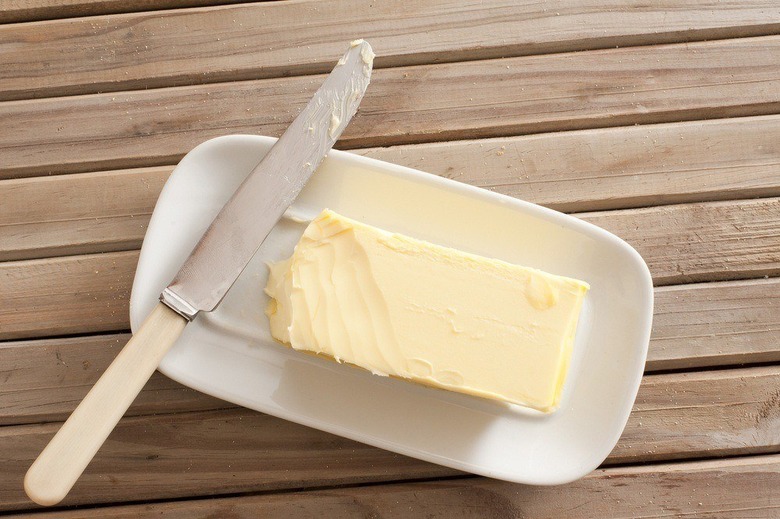Can You Leave Butter Out Of The Refrigerator During The Summer Months?
Room-temperature butter is perfectly spreadable, gliding effortlessly across even the heartiest slices of crusty whole-grain toast. But when butter is stored in the refrigerator it emerges cold and clammy, and only with an extreme amount of force can you get a reasonably thin layer on your toast. For true toast lovers, the textural bliss point of room-temperature butter is an absolute breakfast requirement.
Click here for 7 Foods That Might Kill You If You Don't Cook Them Right
But is there a risk associated with leaving butter unrefrigerated, especially in the sweltering summer heat?
When strolling down the dairy aisle of your local grocery store, it's obvious that the dairy section is fully refrigerated. Butter is a dairy product, but its chemical composition is different from milk, yogurt, and cheese. Butter is one of two byproducts of churned cream (the other is buttermilk). Separating out the buttermilk leaves a semi-sold substance that has low water content and is at least 80 percent fat — butter. The majority of butter manufacturers, as well as the United States Department of Agriculture, recommend storing butter in the refrigerator, but John Bruhn, a dairy-foods specialist at the University of California at Davis, argues that this may not be necessary because butter's high fat and low moisture content creates an unfavorable environment for bacterial growth. Most butter also contains added salt, which Bruhn points out "impedes the growth of spoilage bacteria."
Today's salted butter can be left out for at least two weeks, and even unsalted butter lasts about a week, but butter can still degrade in quality, and warm temperatures only accelerate this process. The oils in the butter will go rancid if exposed to too much light or heat. This speeds up the oxidation process, and may result in butter developing an "off" smell, look, or taste. Therefore, the solution to all your butter quandaries is a simple device — the French butter dish. These ceramic or earthenware containers use a small amount of water to create an airtight seal around a cup of room temperature butter, keeping it cold, spreadable, and fresh all at once.
